Your Safety Snapshot
- Bear spray contains higher concentrations (1-2% CRC) than pepper spray (0.18-1.33% CRC), making it more potent for large animals.
- Bear spray creates a wide fog cloud reaching 25-35 feet, while pepper spray delivers a narrow stream extending 8-12 feet.
- Bear canisters are larger (8-10 inches) and include holsters, whereas pepper spray units are compact (3-4 inches) for pocket carry.
- Bear spray deploys for 7-9 seconds in a sweeping motion, while pepper spray gives you 8-10 short burst depending on the size and in some cases up to 18 burst for larger flip top or twist lock sizes.
- Bear spray is EPA-registered for all bear species, while pepper spray is specifically designed for self-defense against human attackers.
Understanding Active Ingredients and Concentration Levels
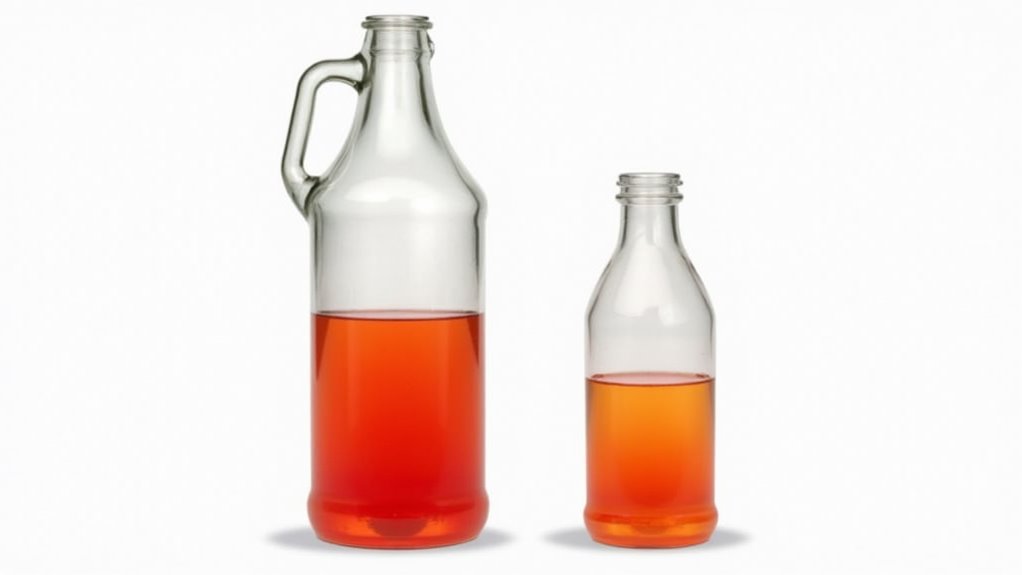
While both bear spray and pepper spray contain similar active ingredients, their concentration levels and formulations are specifically designed for different threats.
You’ll find that bear spray typically contains 1-2% capsaicin and related capsaicinoids (CRC), while regular pepper spray usually has a lower concentration of about 0.18-1.33% CRC.
Don’t let these numbers fool you though – bear spray isn’t necessarily “stronger” than pepper spray, as it’s designed to create a larger, more dispersed cloud that will deter a charging bear.
The active ingredient in both sprays comes from hot peppers, but manufacturers adjust the formulation depending on the intended target.
When you’re choosing between the two, remember that bear spray’s wider spray pattern and different propellants make it less effective for personal defense against humans. Additionally, bear spray, like the Guard Alaska Bear Spray, is specifically EPA registered for all bear species, ensuring its effectiveness in a variety of situations.
Spray Range and Pattern Comparison
Because your safety depends on effective deployment, understanding the spray range and pattern differences between bear spray and pepper spray is essential. When you’re choosing between these defensive sprays, you’ll notice that bear spray typically shoots farther and creates a wider fog-like cloud, while pepper spray delivers a more concentrated stream that’s ideal for close-range human threats.
| Feature | Bear Spray | Pepper Spray |
|---|---|---|
| Range | 25-35 feet | 8-12 feet |
| Pattern | Wide cone cloud | Narrow stream |
| Coverage Area | 15-20 foot spread | 2-3 foot spread |
| Duration | 7-9 seconds | 20-45 seconds |
You’ll want to practice with inert training canisters to get familiar with your spray’s specific pattern and range, as these can vary between brands and models. Remember, wind conditions can greatly affect the spray’s effectiveness, so you’ll need to adjust your positioning accordingly. Additionally, bear spray, such as the Grizguard Bear Spray, is designed to be effective against all bear species, providing a critical deterrent in wilderness environments.
Legal Requirements and Regulations
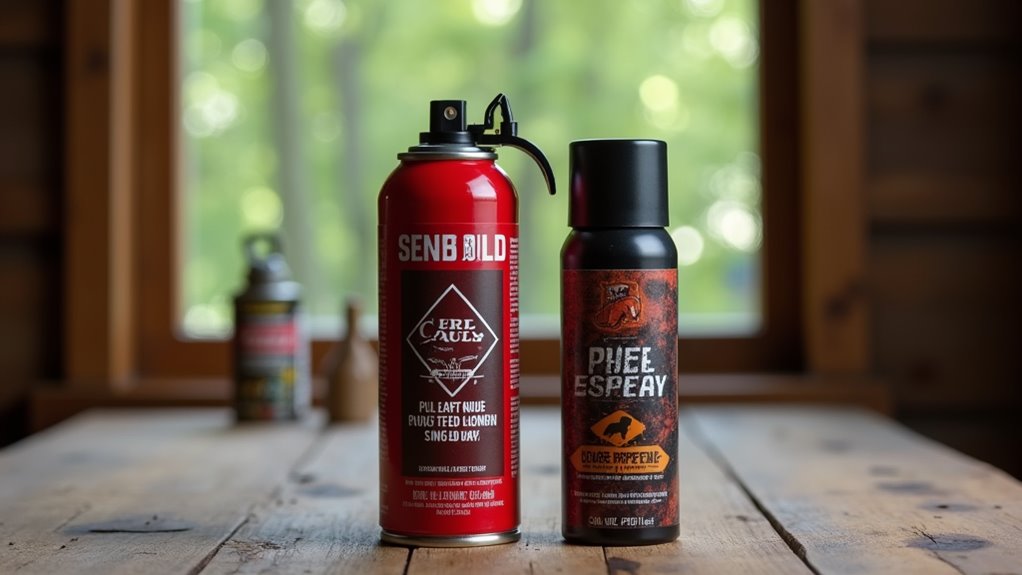
The legal requirements for bear spray and pepper spray vary considerably across different regions and jurisdictions in the United States.
You’ll need to check your local laws carefully, as some cities and states have strict regulations about carrying and using these sprays. While bear spray is generally legal to carry in national parks and wilderness areas, you can’t bring it on airplanes or carry it in many urban settings.
Pepper spray laws are even more complex, and you’ll find different age restrictions, permit requirements, and size limitations depending on where you live.
For example, some states require you to be 18 or older to purchase pepper spray, while others restrict the size of containers you can carry.
It’s essential that you research and follow your area’s specific regulations to avoid legal trouble. Additionally, understanding the tactical use against weapons outlined in self-defense resources can provide valuable insight into the effective use of these sprays.
Intended Uses and Target Species
Despite sharing similar active ingredients, bear spray and pepper spray serve distinctly different purposes and target species.
You’ll want to use bear spray specifically for protection against large, aggressive bears like grizzlies and black bears, while pepper spray is designed for self-defense against human attackers.
If you’re hiking in bear country, you’ll need the wider spray pattern and longer range that bear spray provides to create an effective barrier between you and a charging bear.
When it comes to pepper spray, you’re looking at a more concentrated stream that’s meant to temporarily disable a human assailant at closer range.
The spray patterns are intentionally different because bears, with their larger size and thicker fur, require a different defensive approach than what you’d need in a human confrontation.
Size and Portability Differences
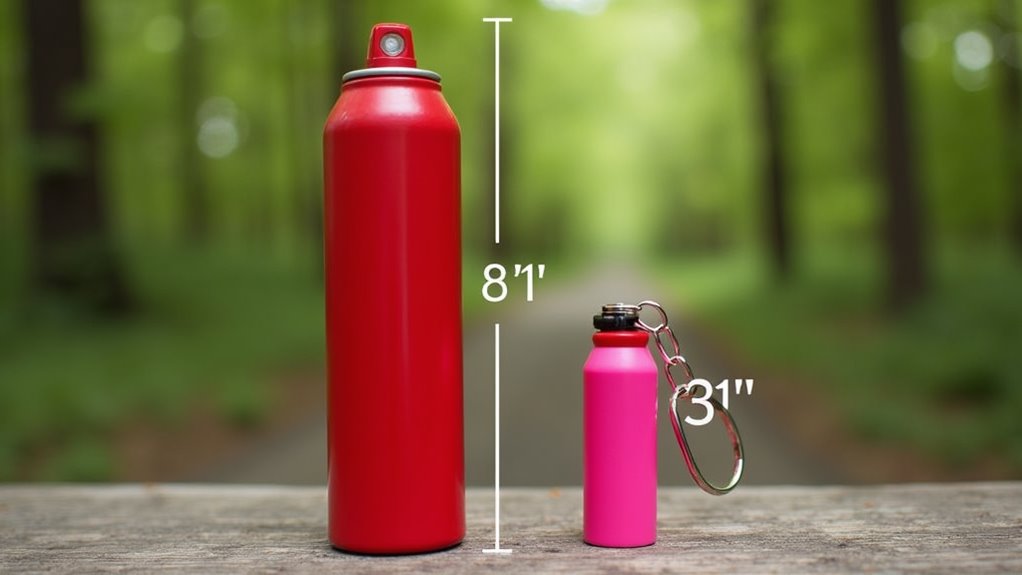
Physical differences between bear spray and pepper spray canisters immediately stand out when you’re comparing them side by side.
Bear spray canisters are considerably larger, typically measuring 8-10 inches tall with a 2-3 inch diameter, while personal pepper spray units are much more compact at 3-4 inches tall with a 1-inch diameter.
You’ll find that bear spray’s larger size makes it less convenient to carry in your pocket or purse, which is why it often comes with a holster that attaches to your belt or backpack.
In contrast, pepper spray’s smaller size lets you easily slip it into a pocket, clip it to your keychain, or store it in a purse compartment, making it more practical for everyday carry in urban environments.
Effectiveness in Various Weather Conditions
When you’re evaluating which spray to rely on, weather conditions play an essential role in determining how effective your defensive spray will be. Both bear spray and pepper spray can be affected by environmental factors, but they’ll respond differently based on their specific formulations and delivery systems.
| Weather Condition | Effect on Sprays |
|---|---|
| Strong Wind | Bear spray creates wider cloud, pepper spray more likely to blow back |
| Heavy Rain | Both less effective, but bear spray maintains better coverage |
| Cold Weather | Bear spray can spray further, pepper spray more likely to clog |
| Humid Weather | Bear spray disperses better, pepper spray may feel more intense |
You’ll need to assess your local climate when choosing between the two, as bear spray typically performs better in challenging outdoor conditions, while pepper spray works best in controlled environments.
Safety Considerations and Proper Storage
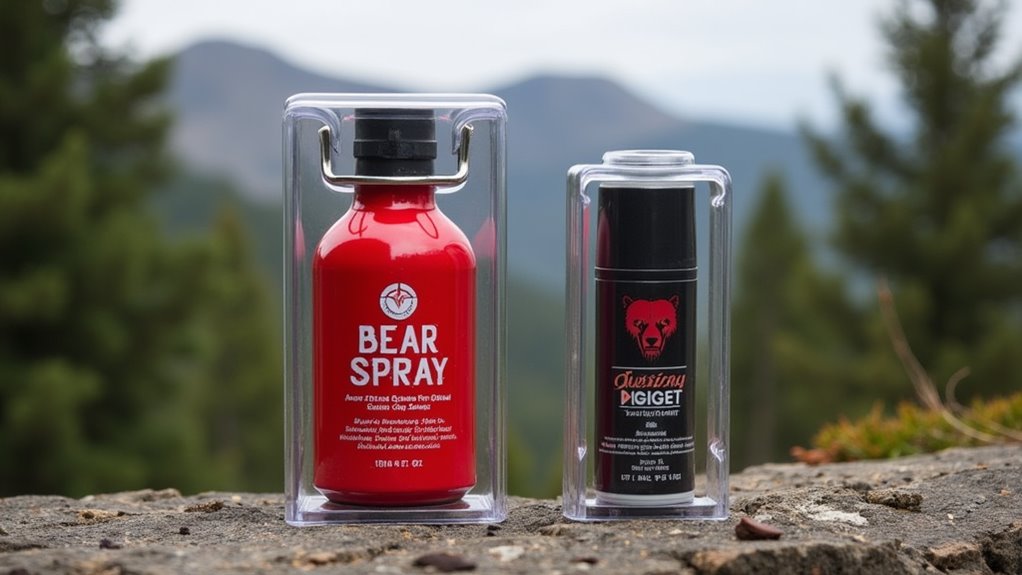
Safe handling and storage of defensive sprays can’t be overlooked, since improper management could lead to accidental discharge or degraded effectiveness.
You’ll need to store both bear spray and pepper spray in a cool, dry place away from direct sunlight, and make sure they’re out of children’s reach.
While they’re both pressurized canisters, bear spray requires extra caution due to its larger size and higher capsaicin content.
You should regularly check the expiration dates on your sprays, as they typically last between 2-4 years, and you’ll want to avoid keeping them in hot cars or freezing conditions.
When carrying either type, make sure the safety clip is engaged and the nozzle isn’t blocked.
If you’re traveling, remember that many airlines won’t allow these sprays in carry-on or checked baggage.
Cost Analysis and Value Comparison
Beyond proper storage and maintenance, the financial investment in these self-defense tools can impact your choice between bear spray and pepper spray.
You’ll typically find that bear spray costs between $30-50 per canister, while personal pepper spray usually ranges from $10-20, making it a more budget-friendly option for everyday carry.
While bear spray might seem expensive at first glance, you’re getting a larger volume and stronger concentration that’s specifically designed to stop a charging bear.
The higher price reflects its specialized formula and broader spray pattern.
If you’re primarily concerned about personal safety in urban areas, pepper spray’s lower cost and smaller size make it a practical choice.
However, if you’re planning outdoor adventures in bear country, don’t let the higher price of bear spray deter you – it’s an essential investment in your safety.
Training and Deployment Techniques
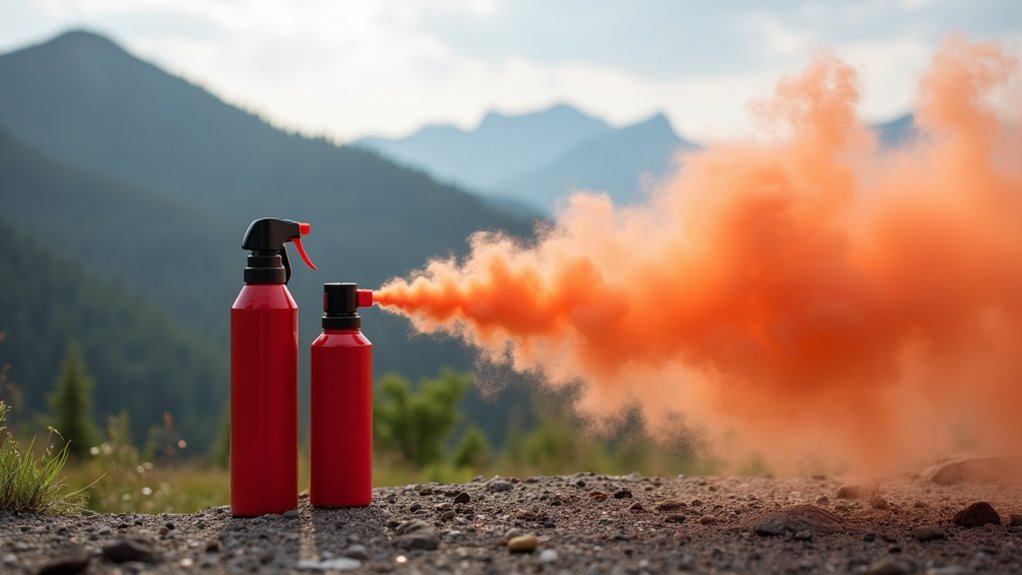
Since both bear spray and pepper spray can be lifesaving tools, proper training and deployment techniques are absolutely essential for their effective use.
You’ll need to practice different techniques for each type, as bear spray requires you to aim in a wide sweeping motion to create a defensive cloud, while pepper spray works best with direct face-level targeting.
When you’re using bear spray, you’ll want to wait until the bear is within 20-30 feet, then spray in short bursts while backing away slowly.
For pepper spray against human attackers, you should maintain a defensive stance, aim for the face from 3-10 feet away, and be prepared to spray in a concentrated stream.
With both types, you’ll need to be aware of wind direction and practice quick-draw techniques from your holster or carrier.
Bottom Line
You’ll want to choose carefully between bear spray and pepper spray based on your specific needs, as they’re designed for very different situations. While pepper spray is your go-to for personal defense in urban settings, bear spray’s stronger formula and wider spray pattern make it essential for wilderness encounters. Remember that each type has unique legal restrictions, concentration levels, and effective ranges, so make your selection based on where and how you’ll actually use it.




